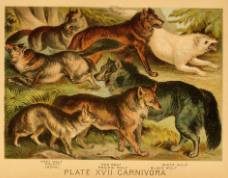Heritage Edition – The Tradition of Throwing Graduation Caps
June 8, 2022
A senior throwing their graduation cap is the moment that marks the end of one life and the beginning of another. This moment happens in most high schools and universities at the end of the year, meant to celebrate the achievements of graduating students.
Graduation caps and gowns were originally worn during the 12th century when universities didn’t have central heating systems. Teachers and students would wear long gowns and caps to help keep themselves warm in cold auditoriums all year long. Eventually, the idea of this outfit became associated with the school environment and stuck in generations in the future.
In the 14th century, big universities began to mandate that graduates wear caps and gowns as a symbol of unification. During this time, colleges and universities wouldn’t allow students to wear other articles of clothing because it was too “excessive,” so a gown was what they would wear on their person. Originally, caps were worn to cover up shaved heads of people of the clergy and were soon worn with the gowns to hold warmth for attending students. The gowns and caps (then called hoods) were black to show a student’s religious affiliation, and to separate themselves from the other people living in the town of their education.
After the Civil War, there was a large decline in college and university students wearing caps and gowns. The reason for this, believed by genealogy researcher Gardner Cotrell Leonard, is because of a dislike of British tastes for academic dress– which would have included the cap and gown.
Caps and gowns were eventually brought back by students of colleges and universities, saying they “provide outward equality among schools” (Boven). Bringing back this outfit, at the request of students, caused a change to the cap and gown to become more personalized. Soon, universities and colleges began to color-code them based on the degree a student received, or to match school colors and designs.
In 1912, the graduation cap toss became a tradition because of the Naval Academy. They became the first institution to throw their caps in the air at their commencement ceremonies. They would throw their caps in the air after serving two years as midshipmen before they would become full officers who would have to wear a different hat. When midshipmen were presented with a new hat at their graduation, they would throw the old one up in the air. The tradition quickly spread to other schools across the nation, marking a celebration and being a symbol of great achievement.
Tassels on graduation caps have become more popular in the last 50 years with a tradition of their own. Students move the tassel on their caps from right to left after receiving their diploma, which symbolizes their transition from student to graduate.
Caps and gowns are now often made with recycled plastic and have many unique designs for students to celebrate their school colors and designs (Graduation Source). These changes give students more choices in their cap and gown than ever before.
In the past few years, cap throwing has become less widespread and not as popular due to injuries that can happen when they fall from the air. All schools and universities in the nation still wear caps and gowns to celebrate the achievements of students moving forward and celebration of their achievements.










































































































































